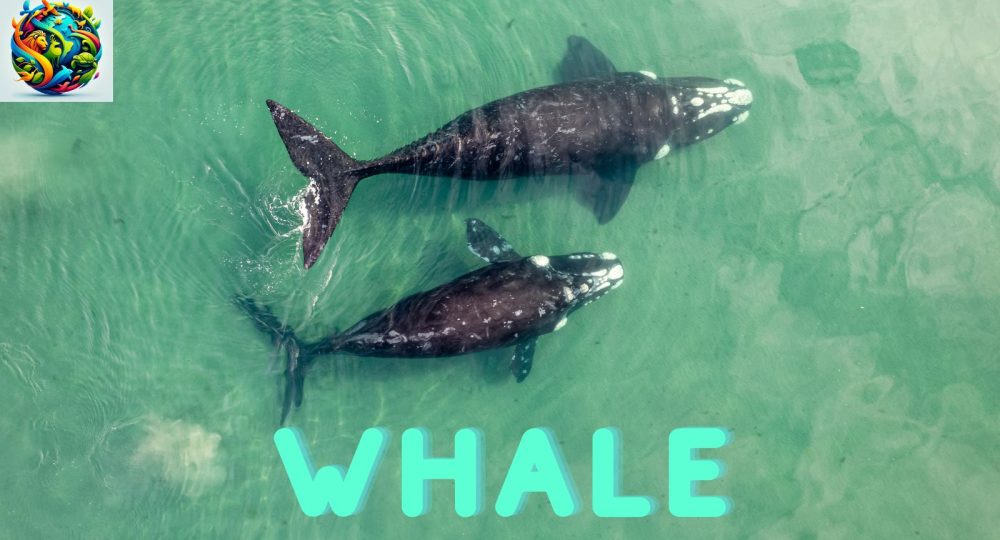Whales: Giants of the Ocean Depths
Whales, the majestic giants of the ocean, have long inspired awe and curiosity. As the largest animals ever to have lived on Earth, they play a crucial role in the marine ecosystem, contributing to the health of the oceans. This article delves into the world of whales, exploring their diverse species, unique behaviors, habitats, and the challenges they face for survival.
Introduction
Belonging to the order Cetacea, which includes dolphins and porpoises, they are divided into two broad categories: baleen whales (Mysticeti), which filter feed small fish and plankton through baleen plates, and toothed whales (Odontoceti), which hunt larger prey with their teeth. These incredible creatures are known for their impressive size, complex vocalizations, and long migrations.
Amazing Fact about Whales
The blue whale (Balaenoptera musculus), a type of baleen whale, holds the title for the largest animal on the planet, reaching lengths of up to 100 feet (30 meters) and weights of approximately 200 tons. Despite their colossal size, blue whales feed primarily on tiny krill, consuming up to 4 tons of krill a day.
Habitat/Food
They inhabit all of the world’s oceans, from the Arctic and Antarctic to tropical waters. Their diet varies widely depending on the species. Baleen whale filter massive amounts of krill, small fish, and plankton, while toothed whale, such as orcas (Orcinus orca), hunt fish, seals, and sometimes other whales.
Appearance of Whale
They come in a variety of shapes and sizes, characterized by their streamlined bodies, large flippers, and fluked tails. Baleen whales have two blowholes, while toothed whales have one. Their skin ranges from the mottled blue-gray of blue whales to the stark black and white of orcas.
Types/Subspecies of Whales
There are over 80 species of cetaceans considered as whales, including:
- Baleen Whale: Such as the blue whale, humpback whale (Megaptera novaeangliae), and gray whale (Eschrichtius robustus).
- Toothed Whale: Including the sperm whale (Physeter macrocephalus), killer whale, and beluga whale (Delphinapterus leucas).
Predator & Threat
They face few natural predators, with orcas and large sharks occasionally preying on smaller whale species. However, human activities pose significant threats, including commercial whaling, entanglement in fishing gear, pollution, ship strikes, and the impacts of climate change on ocean temperatures and food availability.
Mating
Their mating behaviors vary by species, often involving complex courtship displays, particularly among baleen whales. Females typically give birth to a single calf after a gestation period ranging from 9 to 16 months, depending on the species. Calves may stay with their mothers for over a year, learning vital survival skills.
How Whales Communicate
They are renowned for their complex vocalizations, which include clicks, whistles, and in the case of baleen whales, haunting songs that can travel vast distances underwater. These sounds are used for communication, navigation, and in the case of toothed whales, echolocation to hunt prey.
Conservation Efforts
Conservation efforts for whales include international agreements such as the International Whaling Commission (IWC), which regulates whale hunting, and the Convention on International Trade in Endangered Species of Wild Fauna and Flora (CITES). Protected areas, changes in fishing practices, and research on whale populations and health are also critical for their conservation.
Pronunciation in Different Languages
The word “whale” varies across languages, reflecting the global fascination with these sea giants:
- Spanish: ballena
- French: baleine
- Mandarin: 鲸 (jīng)
- Russian: кит (kit)
- Japanese: 鯨 (kujira)
Protecting them is not just about saving these magnificent creatures; it’s about preserving the health of the entire ocean ecosystem. Their survival is intertwined with the health of the oceans, highlighting the importance of global conservation efforts.
FAQs
How do they sleep without drowning?
- Answer: They are conscious breathers and sleep by shutting down one half of their brain at a time. This allows them to continue surfacing for air while resting.
Why do whales breach?
- Answer: They may breach for various reasons, including communication, to dislodge parasites, or as a display of strength and agility.
Can they sense humans?
- Answer: They are highly intelligent and can be curious about humans. While they can certainly sense our presence, their reactions and interactions vary by species and individual.
What is the lifespan of a whales?
- Answer: They have varying lifespans, with some species like the blue whale living up to 90 years, while others, such as orcas, can live up to 100 years or more in the wild.







